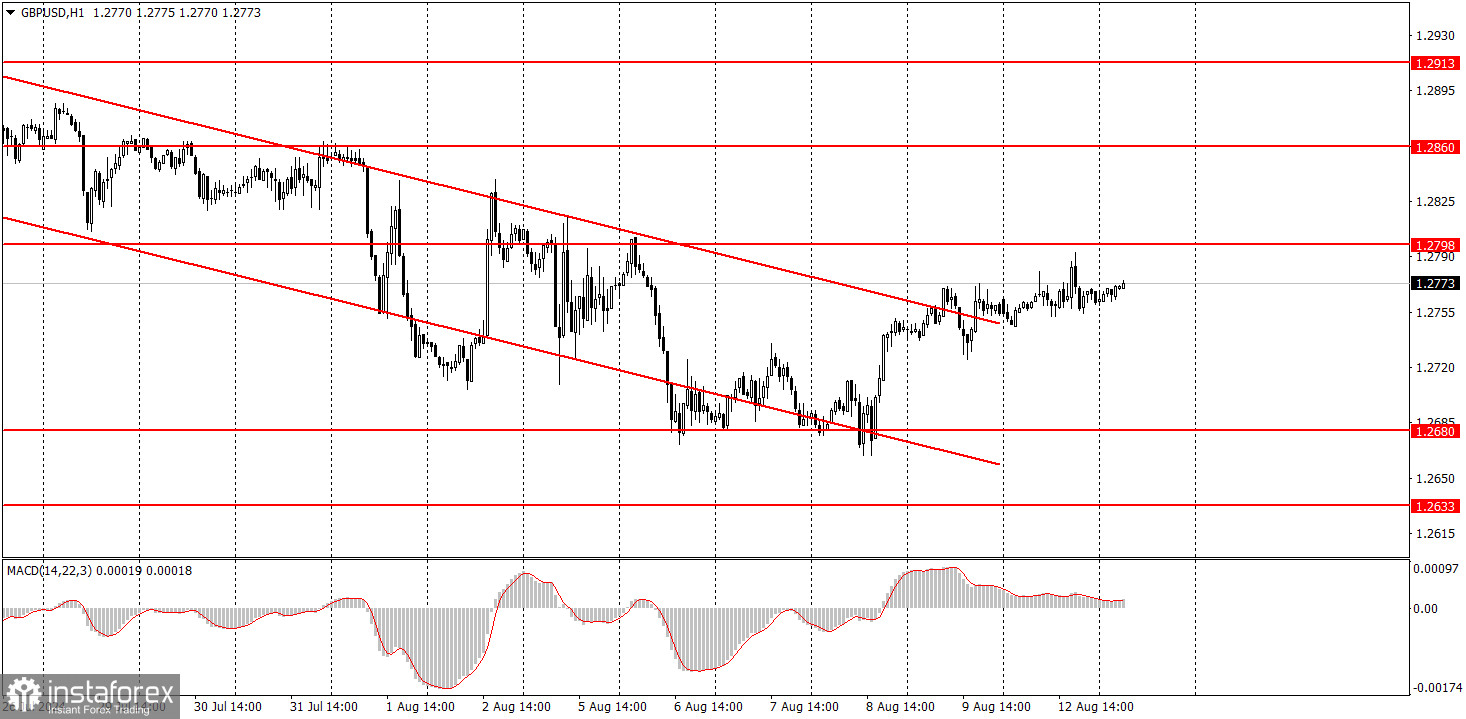Analysis of macroeconomic reports:

There are more macroeconomic events scheduled for Tuesday than for Monday. This is because any positive number is greater than zero. Today, novice traders might want to pay attention to various macroeconomic reports. None are crucial, but each could provoke a slight market reaction. Therefore, throughout the day, both currency pairs might show several reversals.
The ZEW Economic Sentiment indices will be released in Germany and the EU today. Last time, these indicators did not provoke any market reaction. The Producer Price Index will be released in the US, which we also do not consider a report that could change the technical picture. The UK's most interesting data includes unemployment figures, jobless claims, and wage data. We believe these data will have the most significant impact on market sentiment.
Analysis of fundamental events:

Among today's fundamental events, the only notable one is the speech by Raphael Bostic, a member of the Federal Reserve's monetary committee. It is worth noting that speeches by Fed officials are currently significant for the dollar. The market is again convinced that the Fed's rate will be lowered in September and now believes it will be reduced by 0.5%. We strongly doubt this, and only the inflation report can provide an answer to what to expect on September 18. However, Bostic and his colleagues might signal whether the Fed is considering such an option.
General conclusions:
During the second trading day of the week, the EUR/USD pair might continue trading with low volatility, while the GBP/USD pair could show some movement based on the morning data. It is also worth noting that British data might be reflected in the actions of American traders later in the day. The euro may sustain the downward trend, while the pound may show an uptrend.
Basic rules of a trading system:
1) The strength of a signal is determined by the time it took for the signal to form (bounce or level breakthrough). The shorter the time required, the stronger the signal.
2) If two or more trades around a certain level are initiated based on false signals, subsequent signals from that level should be ignored.
3) In a flat market, any currency pair can produce multiple false signals or none at all. In any case, it's better to stop trading at the first signs of a flat market.
4) Trades should be opened between the start of the European session and mid-way through the U.S. session. All trades must be closed manually after this period.
5) In the hourly time frame, trades based on MACD signals are only advisable amidst substantial volatility and an established trend, confirmed either by a trendline or trend channel.
6) If two levels are too close to each other (from 5 to 20 pips), they should be considered as a support or resistance zone.
7) After moving 15 pips in the intended direction, the Stop Loss should be set to break-even.
What's on the charts:
Support and Resistance price levels: targets when opening long or short positions. You can place Take Profit levels near them.
Red lines represent channels or trend lines that depict the current trend and indicate the preferred trading direction.
The MACD (14,22,3) indicator, encompassing both the histogram and signal line, acts as an auxiliary tool and can also be used as a source of signals.
Important speeches and reports (always noted in the news calendar) can profoundly influence the price dynamics. Hence, trading during their release calls for heightened caution. It may be reasonable to exit the market to prevent abrupt price reversals against the prevailing trend.
Beginners should always remember that not every trade will yield profit. Establishing a clear strategy, coupled with effective money management, is key to long-term success in trading.
 English
English 
 Русский
Русский Bahasa Indonesia
Bahasa Indonesia Bahasa Malay
Bahasa Malay ไทย
ไทย Español
Español Deutsch
Deutsch Български
Български Français
Français Tiếng Việt
Tiếng Việt 中文
中文 বাংলা
বাংলা हिन्दी
हिन्दी Čeština
Čeština Українська
Українська Română
Română

